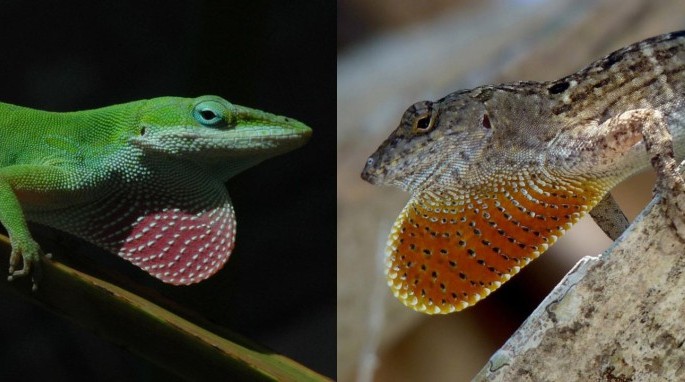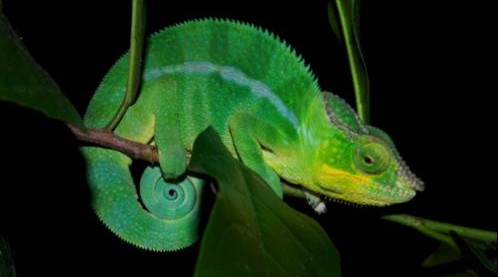In the span of just 15 years, scientists have documented native lizards evolving rapidly in response to pressure from an invasive species.
Scientists working in Florida have documented the high-speed evolution of a native lizard species, in only 15 years, in response to pressure from an invading lizard species.
After contact with the invasive brown anole lizards, the native green anole lizards began perching higher in the trees. With each generation, their feet have changed to become better at gripping the thinner, smoother branches found higher up.
According to the research team, the change occurred at an astonishing pace. Within a few months of first contact, native lizards began shifting to higher perches. Over the course of just 15 years and 20 generations, the green anoles’ toe pads had become noticeably larger, with more sticky scales.
The sight of these lizards evolving so rapidly has astonished observers. “We did predict that we’d see a change, but the degree and quickness with which they evolved was surprising,” said Yoel Stuart, a researcher in the Department of Integrative Biology at The University of Texas at Austin and lead author of the study.
People have generally thought of evolution as a long and slow process, but the evolutionary arms race taking place between the native green anole lizards and invasive brown anole lizards in Florida indicate that life can evolve in response to environmental pressures much more rapidly than previously believed.
“To put this shift in perspective, if human height were evolving as fast as these lizards’ toes, the height of an average American man would increase from about 5 foot 9 inches today to about 6 foot 4 inches within 20 generations — an increase that would make the average U.S. male the height of an NBA shooting guard,” says Stuart. “Although humans live longer than lizards, this rate of change would still be rapid in evolutionary terms.”
RELATED: CHAMELEONS’ COLOR CHANGE SECRET REVEALED
This study is one of several well-documented examples of what evolutionary biologists callcharacter displacement, in which similar species competing with each other evolve differences to take advantage of different ecological niches. A classic example comes from the finches studied by Charles Darwin. Two species of finch in the Galápagos Islands diverged in beak shape as they adapted to eat different food sources.
The researchers speculate that the competition between brown and green anoles for the same food and space may be driving the adaptations of the green anoles. As, the adults of both lizard species are known to eat the hatchlings of the other species, the two lizard species are wise to keep their distance from each other.
“So it may be that if you’re a hatchling, you need to move up into the trees quickly or you’ll get eaten,” explains Stuart. “Maybe if you have bigger toe pads, you’ll do that better than if you don’t.”
The native lizards studied, known as Carolina anoles or green anoles, are common in the southeastern U.S. The invasive species, Cuban anoles or brown anoles, are native to Cuba and the Bahamas. Brown anoles first appeared in South Florida in the 1950s, possibly as stowaways in agricultural shipments from Cuba, and have since spread across the southeastern U.S. The brown anoles have even invaded Hawaii.
Stuart’s paper is published in the journal Science. The study’s co-authors are Todd Campbell of the University of Tampa; Paul Hohenlohe of the University of Idaho; Robert Reynolds of the University of Massachusetts, Boston; Liam Revell of the University of Massachusetts, Boston; and Jonathan Losos of Harvard University.
Support for this research was provided by the National Science Foundation, the National Institutes of Health, The University of Tennessee, Knoxville, and the Museum of Comparative Zoology at Harvard University.
Top Image: Native green anoles (left) have evolved better gripping feet in response to an invasion of brown anoles (right) on islands in Florida (Todd Campbell and Adam Algar)





